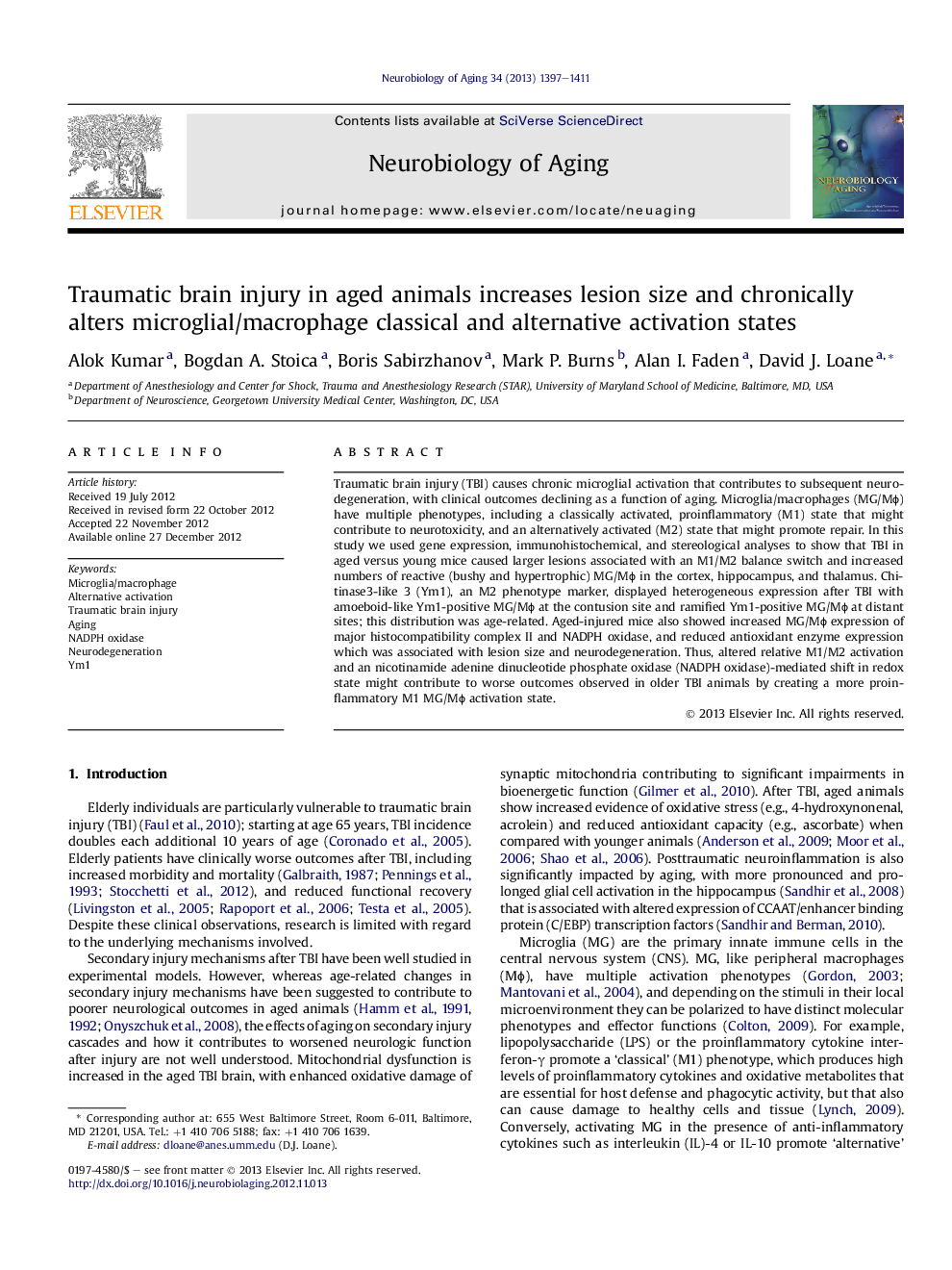| Article ID | Journal | Published Year | Pages | File Type |
|---|---|---|---|---|
| 6807438 | Neurobiology of Aging | 2013 | 15 Pages |
Abstract
Traumatic brain injury (TBI) causes chronic microglial activation that contributes to subsequent neurodegeneration, with clinical outcomes declining as a function of aging. Microglia/macrophages (MG/Mɸ) have multiple phenotypes, including a classically activated, proinflammatory (M1) state that might contribute to neurotoxicity, and an alternatively activated (M2) state that might promote repair. In this study we used gene expression, immunohistochemical, and stereological analyses to show that TBI in aged versus young mice caused larger lesions associated with an M1/M2 balance switch and increased numbers of reactive (bushy and hypertrophic) MG/Mɸ in the cortex, hippocampus, and thalamus. Chitinase3-like 3 (Ym1), an M2 phenotype marker, displayed heterogeneous expression after TBI with amoeboid-like Ym1-positive MG/Mɸ at the contusion site and ramified Ym1-positive MG/Mɸ at distant sites; this distribution was age-related. Aged-injured mice also showed increased MG/Mɸ expression of major histocompatibility complex II and NADPH oxidase, and reduced antioxidant enzyme expression which was associated with lesion size and neurodegeneration. Thus, altered relative M1/M2 activation and an nicotinamide adenine dinucleotide phosphate oxidase (NADPH oxidase)-mediated shift in redox state might contribute to worse outcomes observed in older TBI animals by creating a more proinflammatory M1 MG/Mɸ activation state.
Keywords
Related Topics
Life Sciences
Biochemistry, Genetics and Molecular Biology
Ageing
Authors
Alok Kumar, Bogdan A. Stoica, Boris Sabirzhanov, Mark P. Burns, Alan I. Faden, David J. Loane,
